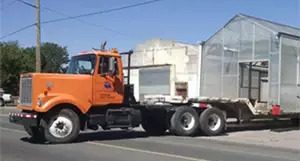
When it comes to preserving the unique charm of Idaho’s architectural past, few tasks are as delicate and rewarding as historic home relocation. Moving a structure that’s withstood the test of time is no small feat. These homes often hold deep historical, cultural, and architectural value—and relocating them requires both precision and passion. In an age where urban development, environmental planning, and infrastructure growth are pressing concerns, moving historic homes has become a way to honor the past while making room for the future.
At the heart of this practice is the careful balance between preservation and progress. Thanks to modern relocation techniques, entire historic homes can be moved to new locations without compromising their structural integrity or historical essence.
Why Relocate a Historic Home?
Relocating a historic home may seem drastic, but in many cases, it’s the best—or only—way to preserve a structure that would otherwise face demolition.
Common Reasons for Moving a Historic Structure
There are several reasons why homeowners, preservationists, or local governments choose to relocate a historic home:
- New Land Developments: With Idaho’s growing population and land being repurposed for commercial, agricultural, or residential use, historic homes may sit in the way of progress. Rather than demolish these irreplaceable structures, relocation offers a second chance.
- Environmental Concerns: Floodplain issues, soil erosion, and changes in zoning laws can pose threats to historic properties. Moving the home to a safer or more suitable site can ensure its long-term preservation.
- Infrastructure Expansion: When new roads, highways, or public projects intersect with a historic home, relocation can be a viable way to protect the structure while accommodating the community’s needs.
- Private Preservation Efforts: In some cases, homeowners purchase historic homes specifically to relocate and restore them as personal or commercial projects (e.g., bed and breakfasts or museums).
The Importance of Preserving Architectural Heritage
Each historic home tells a story—whether it’s an early 20th-century Craftsman, a Victorian farmhouse, or a rustic cabin that’s stood for over a century. These buildings often feature hand-crafted details and building materials that are no longer in use today. Preserving them preserves the craftsmanship, stories, and culture of Idaho’s past.
Relocation offers an opportunity to showcase this heritage in new locations, sometimes as part of revitalization projects or heritage districts. Moving a historic home also allows for adaptive reuse, ensuring it continues to serve a function while retaining its character.
Challenges Involved in Historic Home Relocation
Despite the many benefits, relocating a historic home presents several challenges:
- Structural Fragility: Many historic homes were built with methods or materials that require careful handling. Foundations may be compromised, or walls may lack the reinforcements of modern construction.
- Regulatory Hurdles: Because the home may be registered as historic or subject to specific preservation laws, relocation efforts must often undergo multiple levels of approval.
- High Costs and Logistical Complexity: Moving a home requires transportation permits, road assessments, detours, and even the temporary relocation of power lines or street signs.
- Risk of Damage: Without the proper methods, historic features like plaster walls, original woodwork, or antique fixtures can be damaged during the move.
Despite these obstacles, professional house movers in Idaho have developed the expertise and technology to make historic home relocation not only feasible but remarkably successful.
The Process of Relocating a Historic Home
Relocating a historic structure is never as simple as putting it on wheels and driving away. It’s a meticulously planned process involving careful assessment, permitting, engineering, and preservation techniques.
Structural Assessment and Feasibility Studies
The first step in any historic home relocation project is a comprehensive structural assessment. This includes:
- Analyzing the foundation and framing to determine if the house can withstand the move.
- Identifying fragile components like chimneys, built-ins, or intricate moldings that may need special reinforcement.
- Studying the route between the current and future site to ensure the move is physically possible (considering road widths, power lines, overpasses, and terrain).
In many cases, engineers and historic preservation experts collaborate to evaluate the project’s feasibility and recommend reinforcement or partial disassembly, if necessary.
Modern Techniques for Safe Home Relocation
Today’s home movers have access to cutting-edge technology that helps preserve historic homes during the relocation process:
- Hydraulic Unified Jacking Systems: These allow for even lifting of the structure to prevent twisting or uneven pressure, which can crack walls or damage structural elements.
- Steel Beam Insertions: Steel beams are inserted below the foundation to provide additional support during the move.
- Dollies and Rollers: For smaller moves, dollies can transport homes short distances. For longer hauls, specially designed multi-axle trailers with shock absorption systems are used.
- Pre-Move Reinforcement: Fragile elements are protected with padding or bracing, and sometimes select features are removed and reinstalled after the move.
These techniques reduce the risk of structural damage and ensure the home arrives at its new location as intact as possible.
Navigating Permits and Legal Considerations
Historic homes often come with legal designations or local ordinances that complicate the moving process. Before the first lift is made, it’s important to:
- Check Historic Registry Status: Homes on the National Register or local heritage lists may need special approvals.
- Obtain Moving Permits: These include road use permits, utility coordination, and city or county approvals.
- Environmental Impact Studies: If the new site is in a sensitive area, environmental permits or studies may be required.
Experienced house movers in Idaho can help homeowners navigate this red tape and ensure compliance with all legal requirements.
Choosing the Right Historic Home Moving Experts
Given the complexity of the job, selecting the right relocation partner can make all the difference between preserving history and watching it crumble.
Key Qualities to Look for in a Historic Home Mover
Not all moving companies have the expertise to handle historic structures. When searching for a mover, look for:
- Experience with Historic Homes: Ask for examples of past moves and photos of successful projects.
- Specialized Equipment: Ensure they have hydraulic jacks, steel beams, and trailers suited for heavy or fragile structures.
- Knowledge of Idaho Terrain and Laws: Every move is different, and local knowledge helps prevent costly surprises.
- Preservation Mindset: A company that values the structure’s historical integrity will treat the project with greater care.
Cost Considerations and Budget Planning
Historic home relocation is an investment, but it’s often more affordable than new construction or rebuilding after damage. Costs typically include:
- Structural assessments and engineering reports
- Labor and equipment rental
- Permits and legal fees
- Route preparation (e.g., tree trimming, utility management)
- New foundation work at the destination site
While prices vary widely depending on the size of the home and the distance of the move, having a clear budget from the outset ensures that surprises are kept to a minimum. Reputable movers will provide a detailed estimate with itemized costs and timelines.
Ensuring a Successful and Preservation-Friendly Move
A successful move doesn’t just involve getting the house from point A to point B—it involves maintaining the historical value of the structure. Here are some best practices:
- Document the Home: Before the move, take photos of architectural details, finishes, and key rooms. This helps with restoration if any parts are damaged.
- Work with Preservation Consultants: Involving experts can ensure compliance with local preservation standards and help you make decisions that retain the home’s historic character.
- Create a Restoration Plan: After the move, many homes need minor repairs, new foundations, or modern utilities. Planning this in advance reduces downtime and prevents compromises in historical value.
Preserving Idaho’s History—One Move at a Time
In a place as rich in cultural and architectural heritage as Idaho, historic home relocation offers a path forward that respects the past. Whether you’re saving a treasured family home from environmental danger, moving a structure out of the way of new construction, or giving a historic building new life in a different setting, relocation is a valuable preservation tool.
Thanks to today’s advanced techniques, homeowners no longer have to choose between progress and preservation. By working with the right professionals, you can move a historic structure with minimal disruption—and maximum success.
Ready to Make History?
At Associated Pacific Movers, Inc., we specialize in the art and science of historic home relocation. Based in Boise and serving communities throughout Idaho, our team brings decades of experience and industry-leading equipment to every job. We understand the importance of preserving the past, and we’re committed to helping you move your historic structure safely, efficiently, and with the utmost care.
Contact us today to schedule a consultation and take the first step in your historic home relocation journey. Whether you’re preserving a cherished family home or saving a landmark from demolition, we’re here to help you carry history into the future.

